
Far too often, new gardeners give up before they even get started because of the cost. Seedlings, bags of compost, hand tools, fertilizers, it all adds up quickly. But most of that stuff is completely unnecessary. (Shhh, don’t tell the gardening industry.)
You can start a garden on the cheap.
I’ve been gardening for decades and can give you an honest look at what it takes to start a garden for “free.” This isn’t a collection of disparate tips. By time you finish reading, you’ll have an actionable plan for a garden.
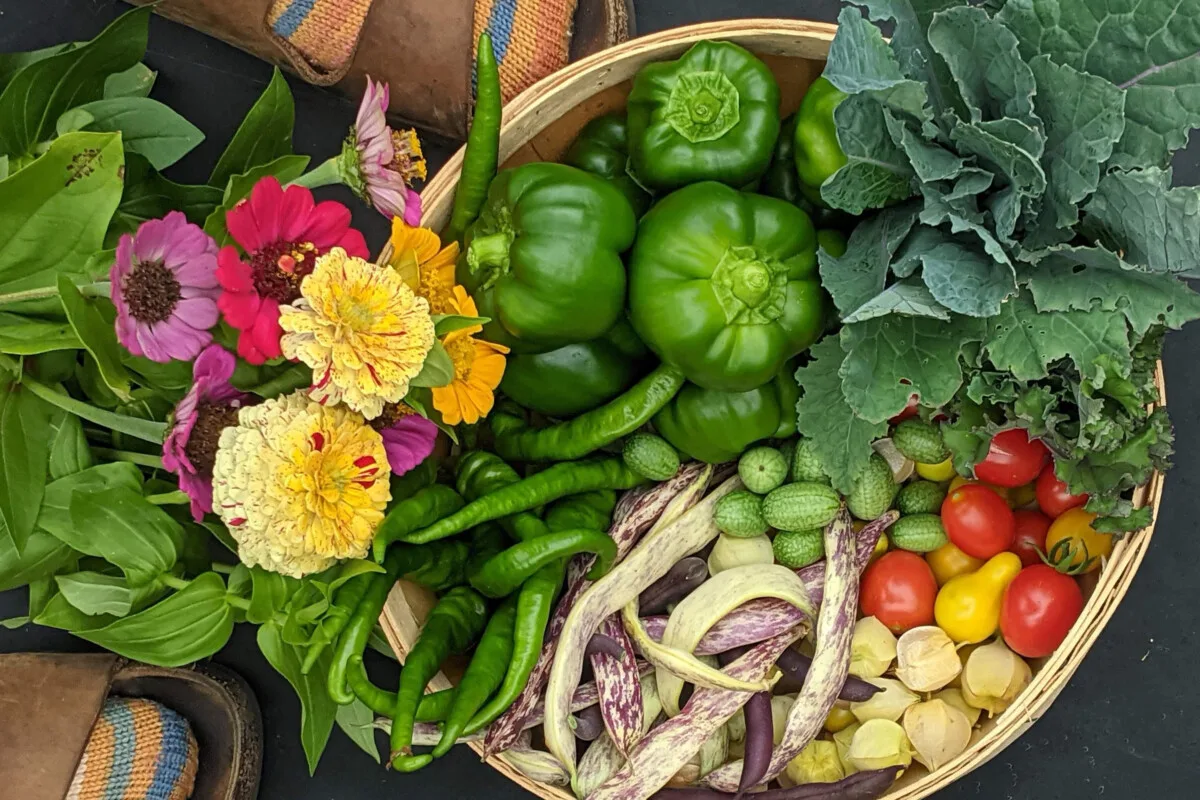
The No Bull Feathers Approach to Starting a Garden On the Cheap
Are the costs of starting a garden putting you off? Are you as broke as broke can be but want to grow your own vegetables? No worries. I’m going to show you how to bootstrap a garden. But first, we’re going to cut through the bull feathers.
A Google search for “start a garden for free” will yield numerous articles, all spouting many of the same unhelpful tips that waste your time and leave you without a plan and, worse, without a garden.
That’s because most of those articles are written by freelance writers, not gardeners.
In the end, you get a lot of articles all saying the same thing, and none of it helpful.
One of my favorite tips I often see suggested is to save seeds. From where? Your non-existent garden? Or, they go on to say, have a friend or neighbor save seeds for you! If you’re reading this now, chances are you want to start a garden this year, not wait for your neighbor to save seeds from their harvest at the end of the growing season.
And what if your neighbor is growing hybrids, or they have more than one variety of open-pollinated species growing in their garden? Oh, you mean the non-gardeners didn’t talk about hybrids or cross-pollinated seeds?
I’m a gardener of around 35 years. I’ve moved and started a new garden from scratch numerous times throughout my life.
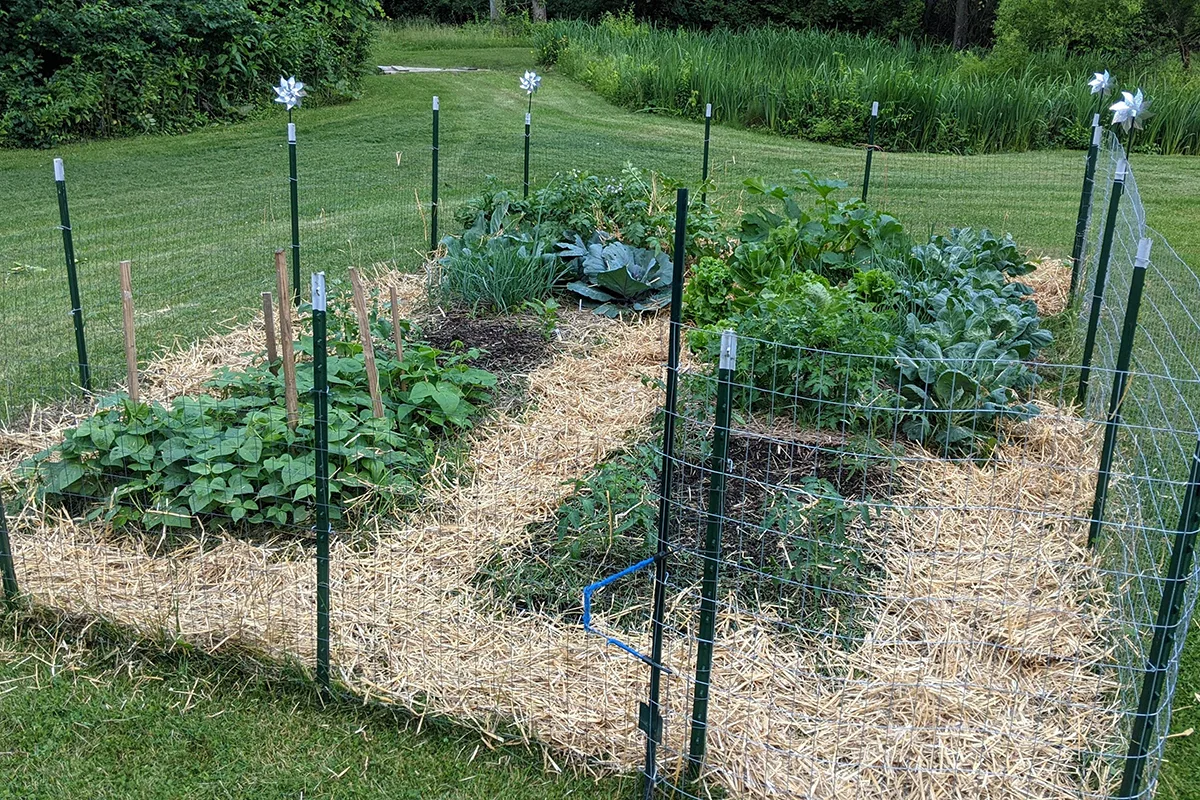
Sometimes, I barely had two nickels to rub together. And I’ve helped a few people set up gardens along the way.
I won’t insult your intelligence with useless tips. I won’t kid you about what you can get for free or what you have to spend money on. In the end, you’ll have a plan to start an as-free-as-I-can-make-it garden. From soil to seedlings to garden tools; I’ll cover it all.
Why a Free Garden Isn’t Free
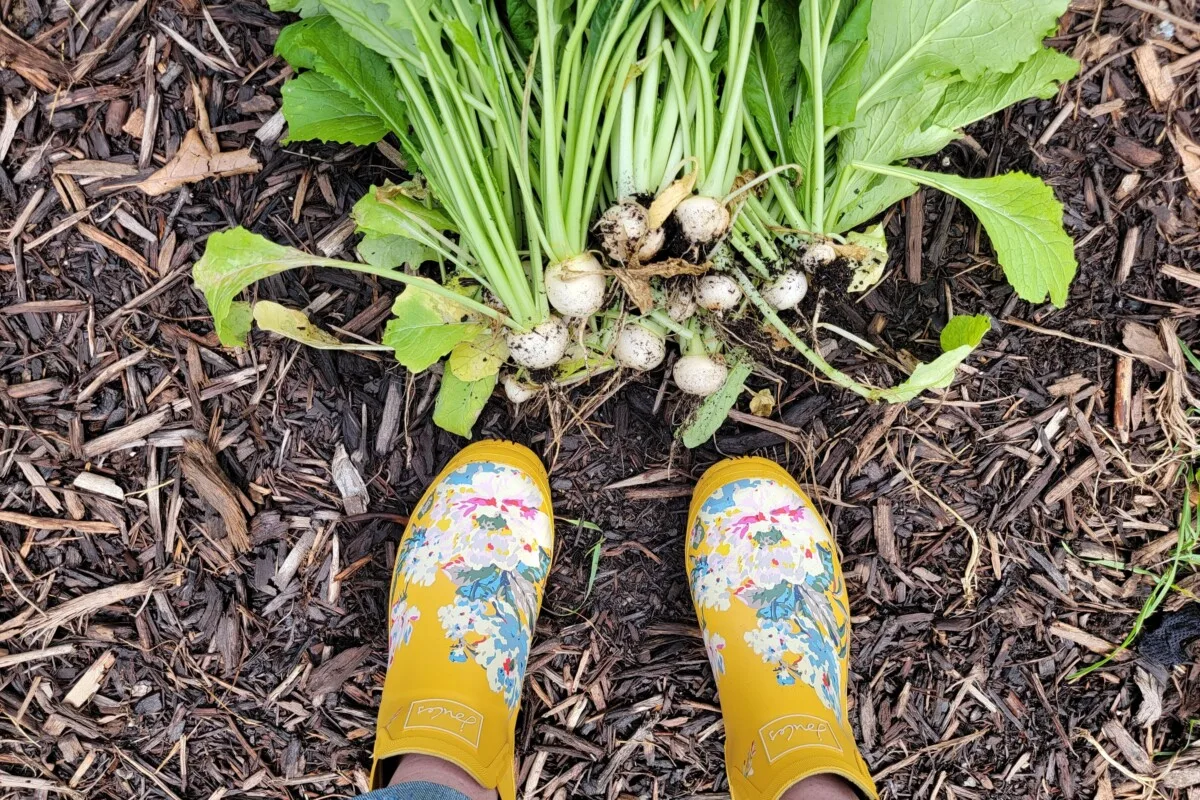
Nearly all the stuff at your local garden center is unnecessary. It’s there to make gardening easier and convenient. Most of what you need can be found around your home, borrowed or donated from your social circle. Pepper plants don’t care if they start out in a recycled toilet paper tube or yogurt cup.
Here’s the thing, my friend, we all pay in the end. The only difference is the currency.
If money is tight, then the currency you’ll be spending is time, sweat and maybe a little pride. The pride part always cost me the most because I’m terrible at asking for help. But I can say with certainty that if you do ask for it, most gardeners will help you in spades. (Pun intended.)
Make a Plan and a List
If you’re like me, the whole “not-knowing” aspect of a plan is what makes it feel daunting. But as soon as you get everything down on paper, it doesn’t feel as huge anymore. Grab a pen and some paper, and we’ll figure a few things out.
What do you want to grow?
If you’re starting from scratch, it’s a good idea to start small and add to your garden each season as you’re able. You’d be amazed at what you can grow in a garden as small as 4’x4’. Pick four or five vegetables you would like to grow. Tomatoes are always a popular choice. If you eat a lot of salads, this is a great way to save some cash. Lettuce is easy to grow. How about peppers, peas, carrots, basil or beans?
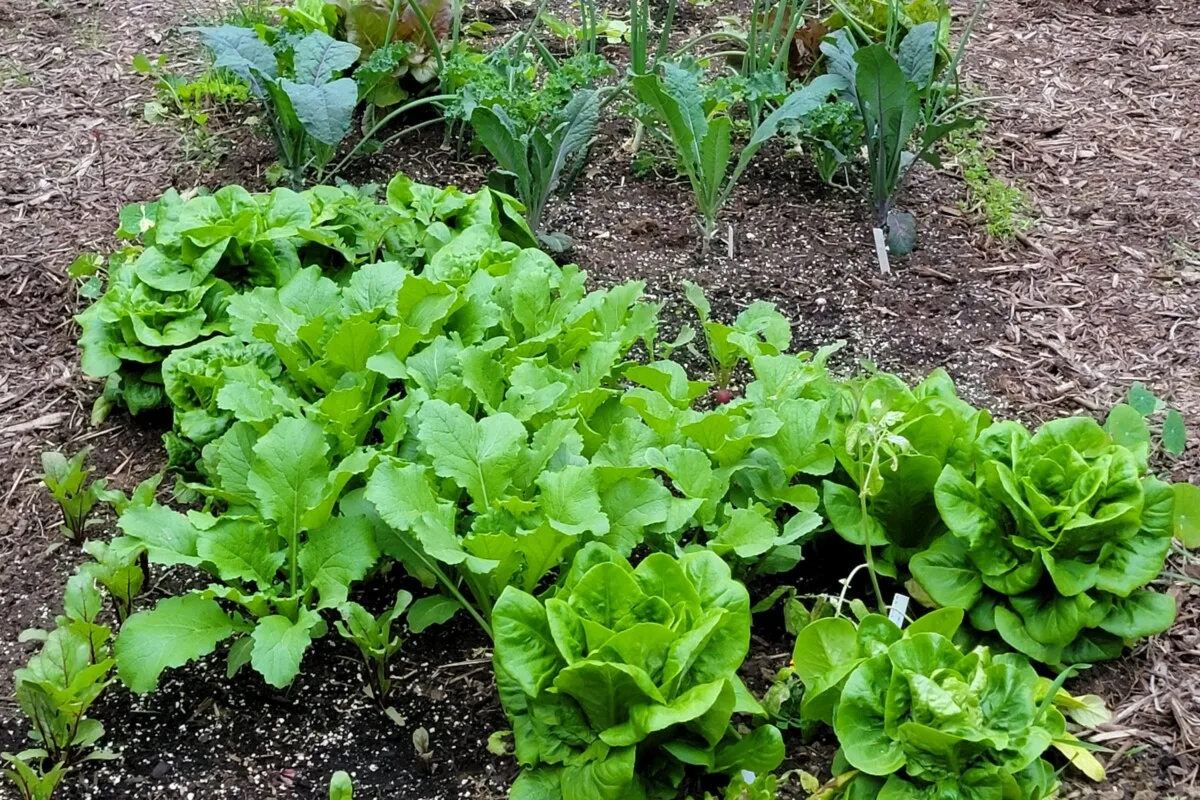
Where will you grow your vegetables?
If you have a yard, even a small one, your least expensive option is to grow directly in the soil. Skip the fancy raised beds; they’re expensive to get started and unnecessary. If you don’t have ground access, then containers are the next best thing and open up a world of growing opportunities.
Make a list of all the gardeners in your life.
I mean all of them, not just close friends and family. That neighbor down the road you don’t know too well with the amazing garden, the coworker who puts their extra zucchini in the breakroom every summer, and that woman at church who always brings a jar of homemade relish to potluck dinners.
All of these people have something in common – they can help you start a garden for free.
Even if you only end up with one person on your list, as a gardener, I can tell you we love showing off and sharing our knowledge. Come, my little sprout, let me impress you with all of my gardening know-how and unload all the extra stuff I have floating around my garden shed.
Think I’m wrong? Start a garden.
In a few years, if you aren’t more than happy to help a new gardener out, I’ll eat my gardening gloves.
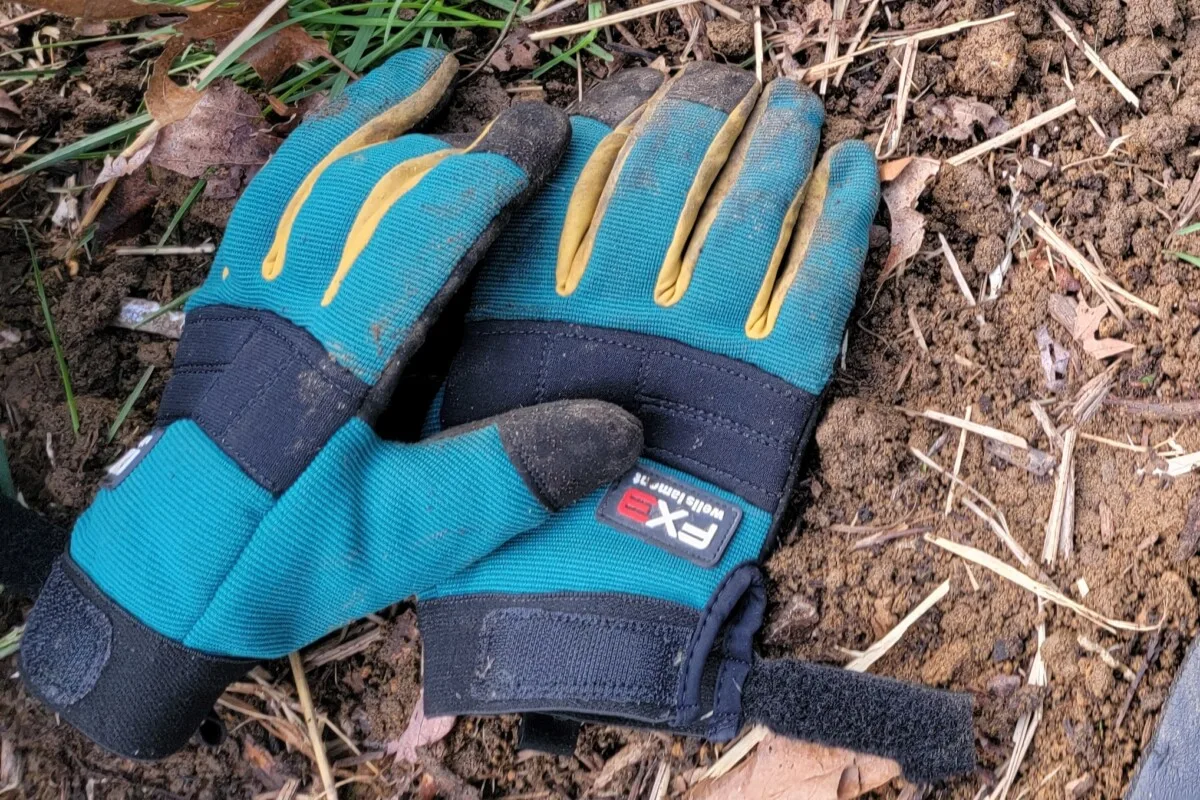
Gathering What You Need to Garden
Now that you have the basics of a garden plan, it’s time to corral your resources. Here’s a list of what you’ll need and where you can source these items for free or inexpensive options if you can’t find them for free. If you know you need something, keep your eyes open for substitutions around your home. Often, we can find a solution right under our noses or by asking a fellow gardener.
Seeds and Seedlings
A lot of articles will tell you to start seedlings to save money. If you’re starting from scratch on a shoestring budget, do this as a last resort. It requires extra materials to get started.
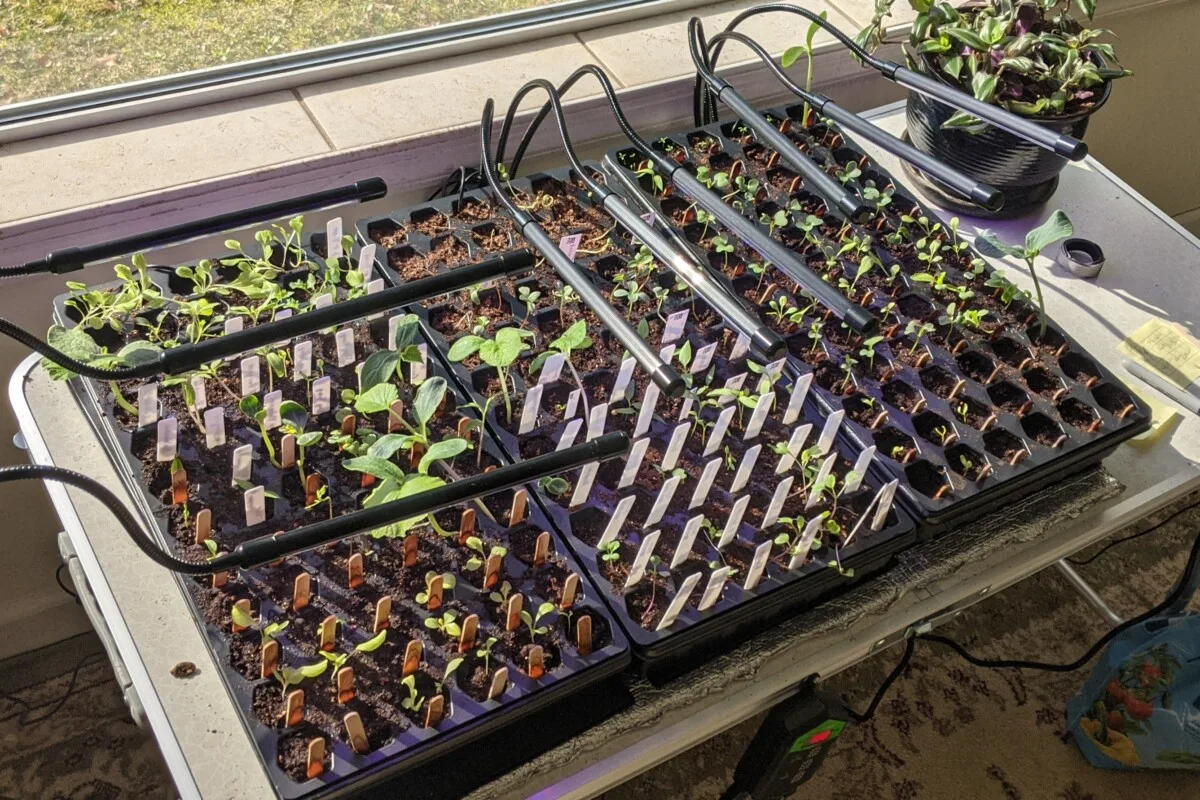
The majority of vegetables won’t need to be started indoors anyway unless you live somewhere with a short growing season. Only things like tomatoes, peppers, eggplants and herbs will need to be started indoors.
Instead of starting seedlings, hit up your list of gardeners.
If they start seeds themselves, they’ll most likely have extras or be more than happy to start seeds for you. Ask sooner rather than later.
Even if they don’t start their own seeds, they may still have plants to share. Most seedlings come in a starter pack of four. If your gardening acquaintance is only planning on growing two cucumber plants this year, you’re in luck.
Another great way to source seedlings is to keep an eye on Craigslist and Facebook Marketplace.
A lot of people will list their extra seedlings for free. The key is to start looking a couple of weeks before your last frost date and check listings daily.
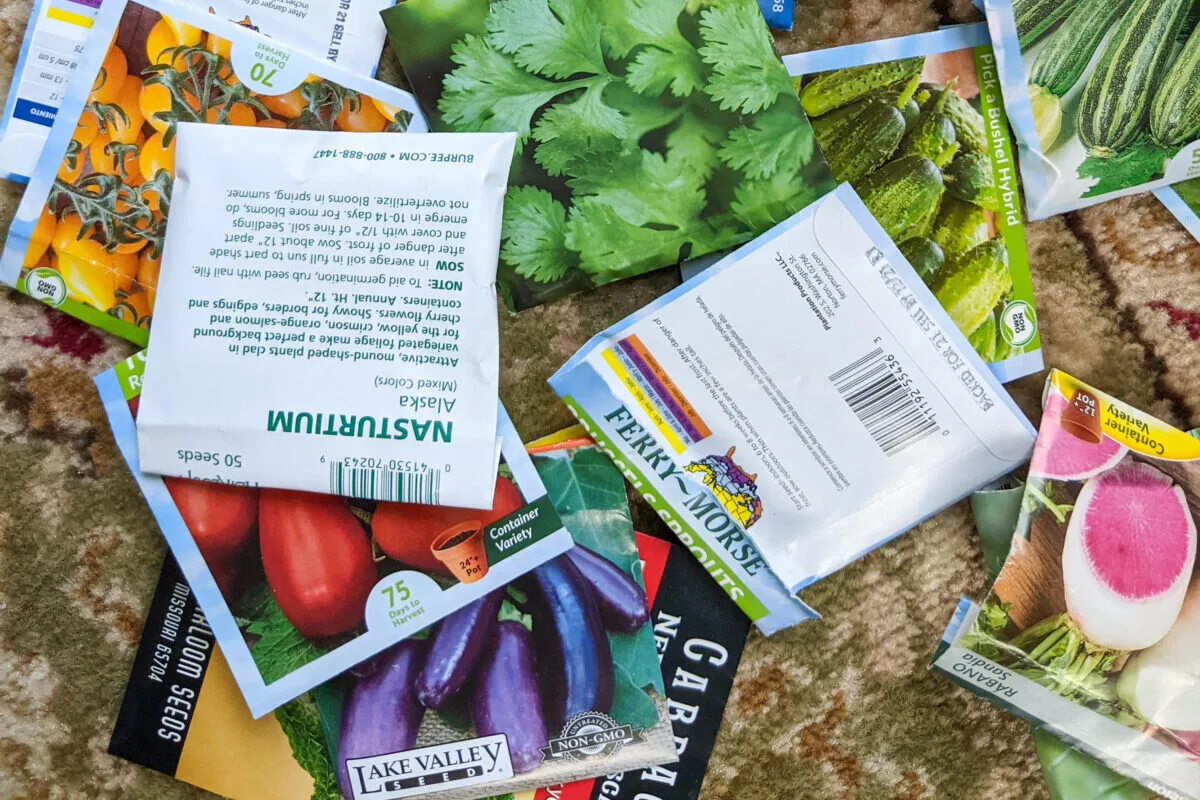
When it comes to seeds, again, hit up your list of gardeners. Ask if anyone has extras they can spare. The nice thing about seeds is there are quite a few in each packet, so sharing isn’t a big ask.
Okay, you’ve hit up your gardeners, and you’re still lacking in seeds, or you find you need to start some. You’re in luck; seeds are dirt cheap. You can get them at the dollar store. And if you’re on a tight budget, that’s exactly where I suggest you get them.
If you need to start seeds, I suggest doing so with whatever you can find around your home—plastic cups, empty food containers that have been washed out, toilet paper rolls, all of these will work just fine.
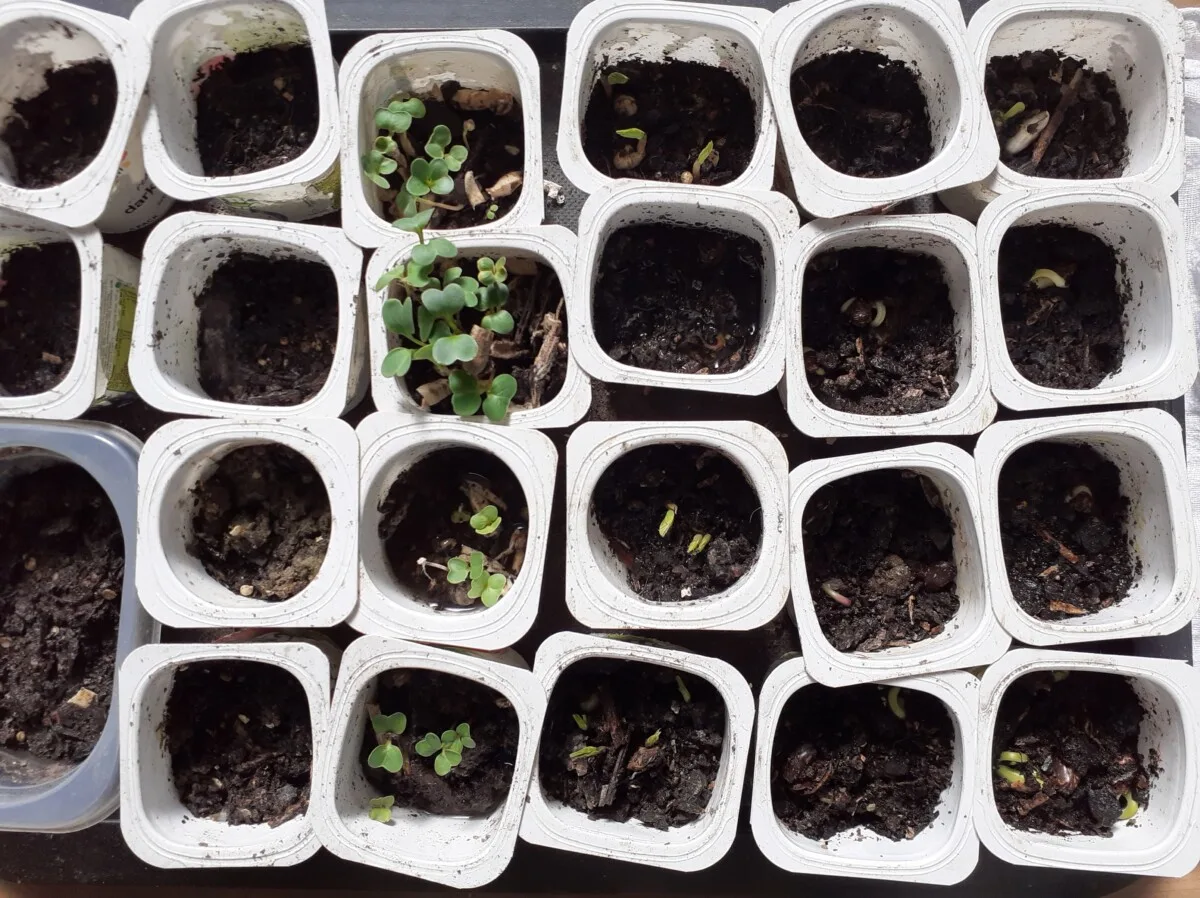
The most expensive thing you’ll run into here is soil, so let’s address that next.
Sourcing Free or Inexpensive Soil
If you’re starting your veggie garden in the soil, phew, you’ve just saved yourself the biggest expense in starting a new garden. However, you will have to pay with sweat equity to get it started. Save cardboard boxes and place them on top of the ground where you’re planning your garden. (You’ll need to weigh them down with something heavy.) The sooner you do this, the better. It will make that first dig a little easier.
Once the grass under the cardboard is dead, you’ll need to cultivate the soil to the dimensions of your planned garden. (This is why we start small; this part is hard work.) You’ll want to dig up and loosen the dirt to about 12” deep. Pull out rocks as you find them. Let your newly dug garden rest for a day or two, then go back and give it another once over with a shovel and rake. It’s best to do this in dry weather.
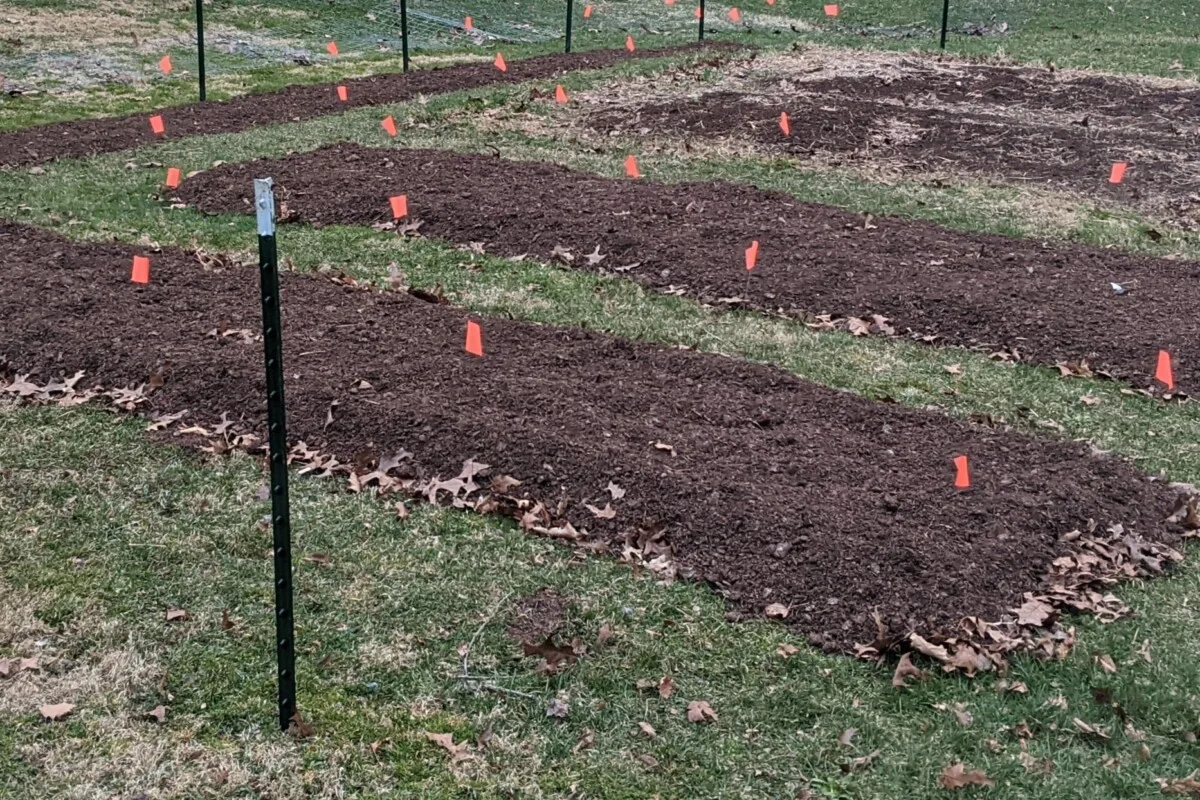
If you’re gardening in containers, then here’s where I’ve got some bad news for you. You’re going to have to spend some money.
Hopefully, we’ll be able to save you enough money in all other areas to make this part easier to do. It’s near impossible to find free topsoil or any type of clean fill dirt that’s of a quality you can grow things in. That kind of soil takes work, so we have to pay for it. When it comes to sourcing soil for your garden, grab the big bags. It’s cheaper. Shop around and look for the best price. (Hi, Walmart!)
Containers to Grow Veggies In
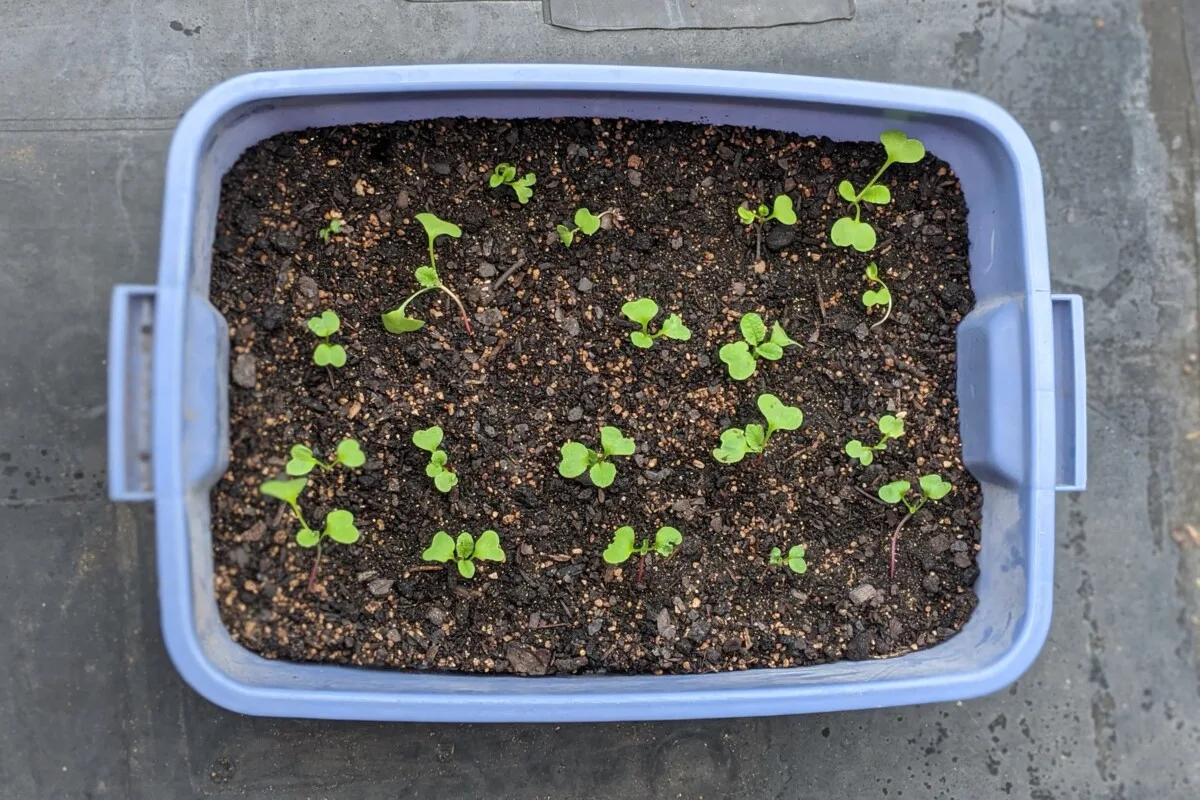
This is where you get creative. Will it hold dirt? Can you poke a hole in the bottom for drainage? Then you can probably grow vegetables in it. Will it be pretty? Probably not, but this isn’t Martha’s garden. We’re here to spend as little money as possible.
- The old plastic kiddie pool in the garage the kids don’t use anymore? You can grow veggies in that.
- A five-gallon bucket? You can grow veggies in that.
- An existing window box with flowers? You can grow veggies in that.
- Gallon milk jug? You can grow veggies in that.
- That one storage tote with the missing lid? You can grow veggies in that.
- The toilet sitting out on the curb from someone’s bathroom renovation? Okay, look, we’ve got to draw the line somewhere.
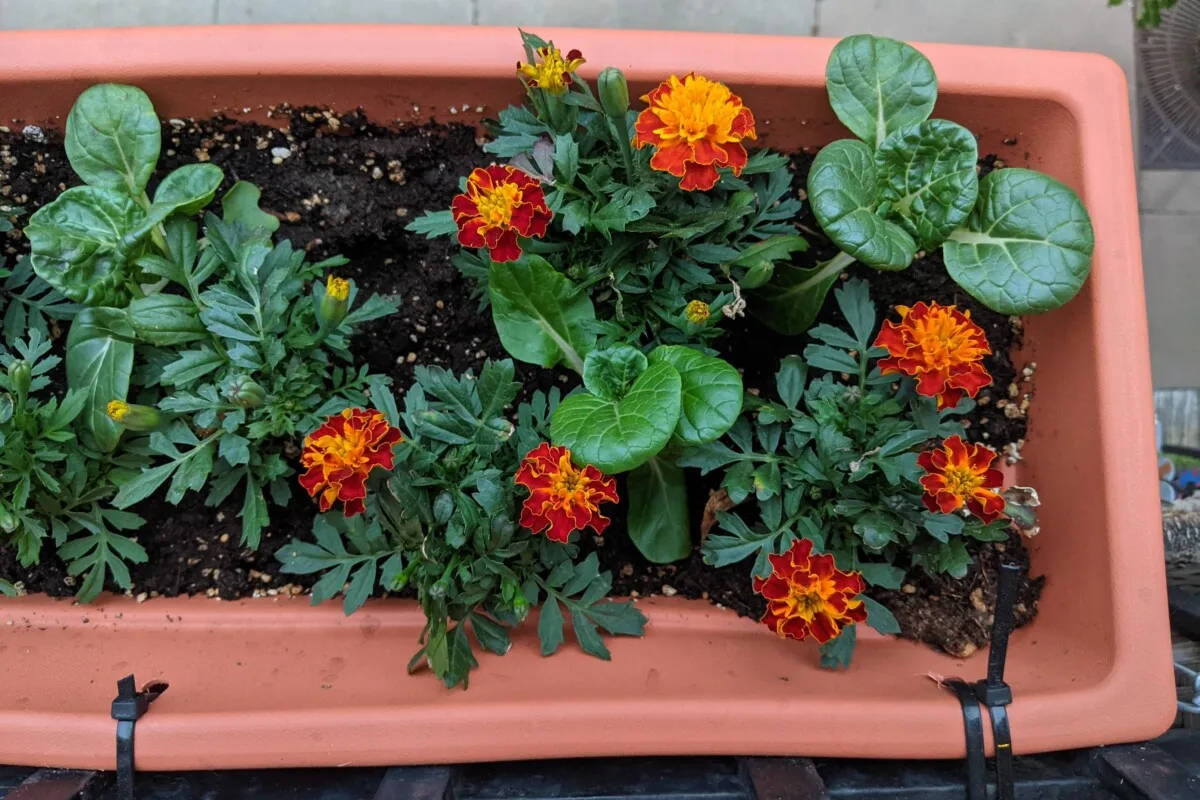
My point is this – in a society of abundance, we’re never at a loss for containers to grow vegetables in.
Gardening Tools
Watering Can
You don’t need one. Save a milk jug. Nearly all plants prefer to be watered at the base. With a milk jug, you can water your plants right where they need it while conserving water. If you want a fancy sprinkling version, poke some holes in the cap.
Hand Tools
These are easy. Put your caveman thinking cap on and look for simple tools around your house. Hit up your kitchen drawer. You know that one nylon spoon you accidentally set on the burner while it was still hot, but you never threw it away? Boom – garden spade. An old plastic cup, an empty plastic jug with the bottom cut off, or an empty coffee can, all of these can be used for scooping and digging in the soil.
You can use whatever scissors you have around or a pairing knife for cutting and trimming. Yarn or bread twist ties can be used to secure plants that need to be staked.
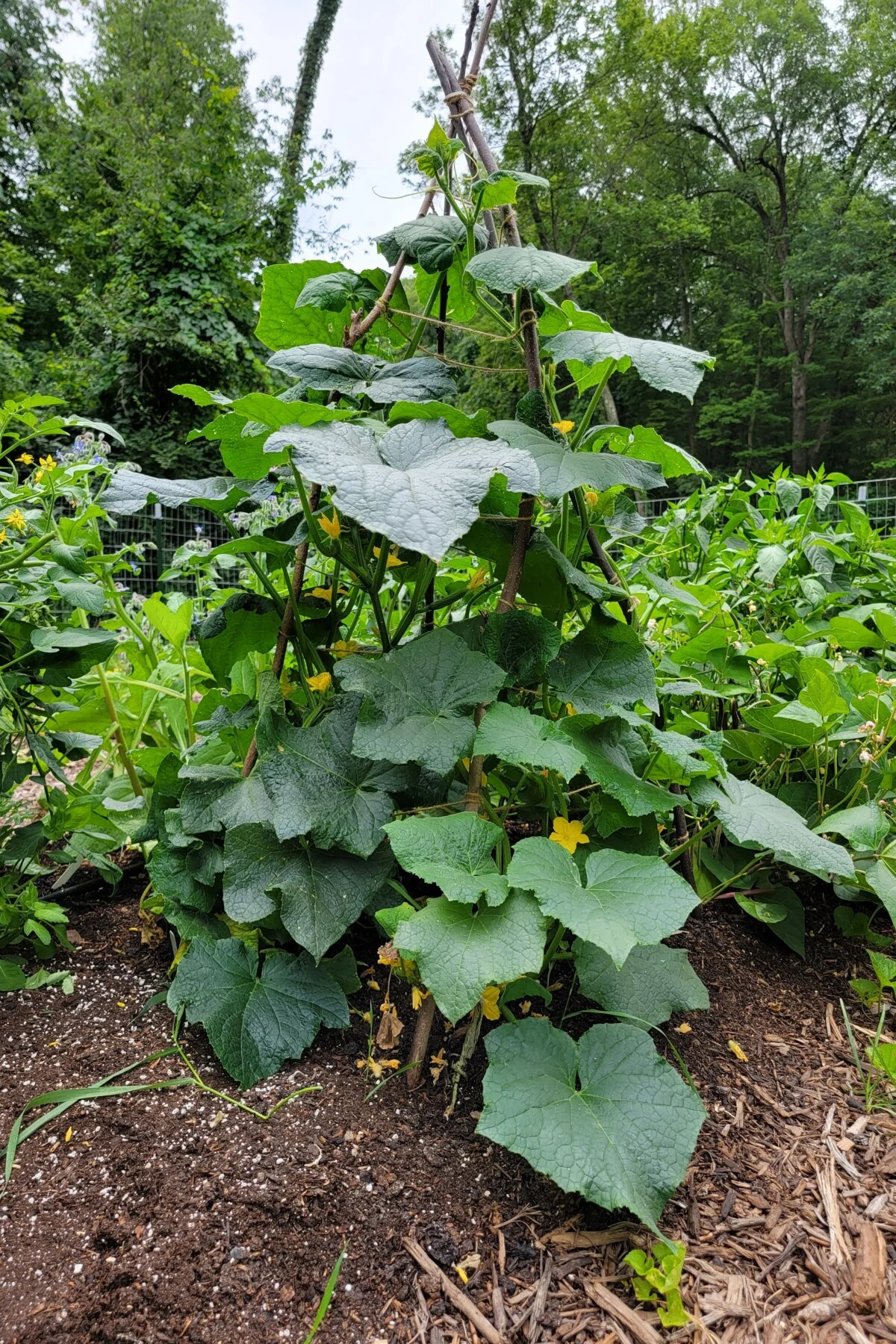
Twigs and branches make excellent structures for climbing plants or staking tomatoes. Not to mention, they lend a rustic charm to your garden.
Fertilizer
If this is your first year gardening, you probably won’t need it. You’re either growing in the ground (which likely has enough nutrients to sustain your veggies for a year), or you’re growing in a purchased growing mix. Most will already have nutrients in them.
Shovel, Rake, Etc.
If you don’t already own these, ask a neighbor if you can borrow theirs. That’s what neighbors are for.
Ask For Help and Be Specific
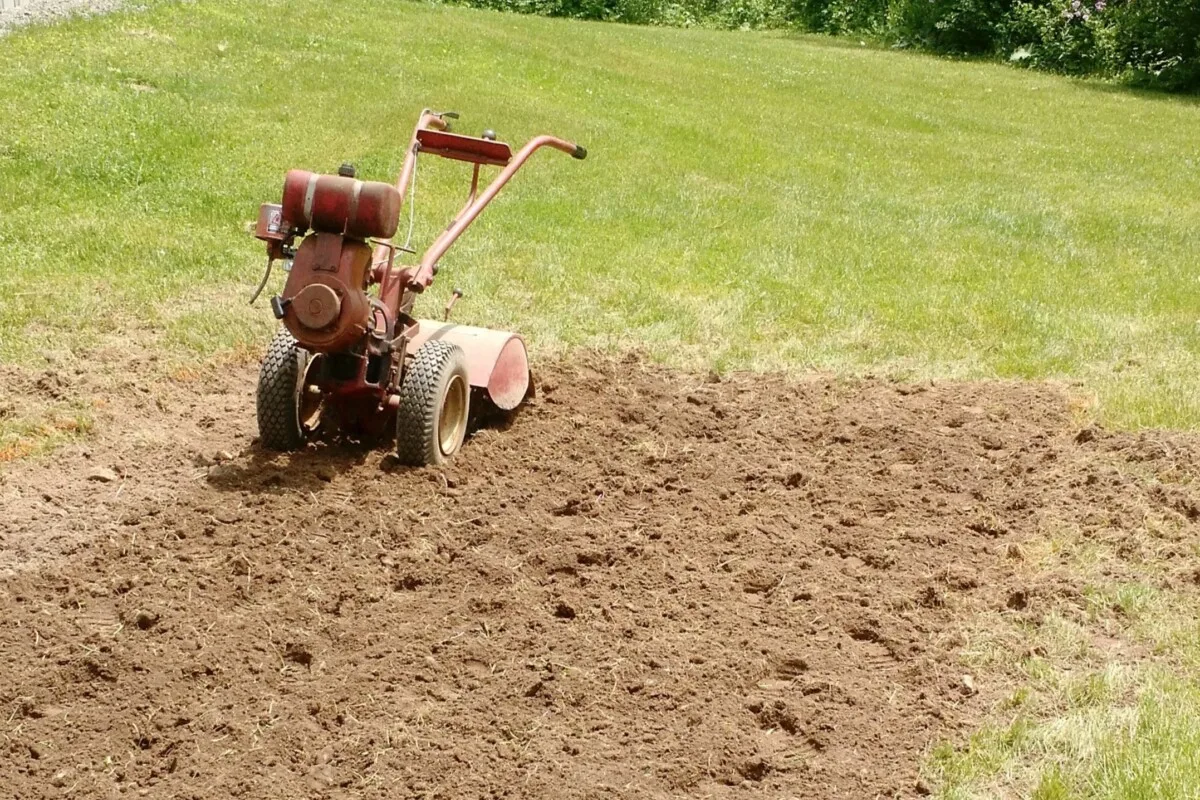
Here comes the hard part – asking for help. It’s a huge part of starting a garden for free.
Most of the time, articles like this will suggest you barter in exchange for what you need. As if you’re supposed to roll up to Home Depot and start haggling with a bemused cashier for six bags of garden soil in exchange for two dozen homemade chocolate chip cookies.
Skip bartering entirely.
Here’s the thing, Benjamin Franklin stumbled on a weird human trait that still holds true today, especially in gardeners. He noticed that asking someone to do you a favor makes them feel more positive towards you. Psychologists have dubbed this the Benjamin Franklin Effect—very original, guys.
Basically, the person doing the favor feels good about themselves, and they develop more positive feelings towards us.
If you need help, just ask. Skip the awkward bartering. Even gardeners who you don’t know well will be likely to help. Like I said, we’re all enablers.
Make a list of the things you need, and be specific.
People are more likely to help if they know they have what you need. If you tell everyone you’re starting a garden and would appreciate anything they can give in the way of helping out, you’re less likely to get a response. However, if you hit them up with a list, you’re more likely to get responses like, “Oh, yeah, we have a bunch of 5-gallon buckets sitting in the garage that we never use. You’re more than welcome to them.” Or “I started extra cherry tomatoes in case a few didn’t survive. I have two plants you can have.”
Don’t be afraid to ask for services, too.
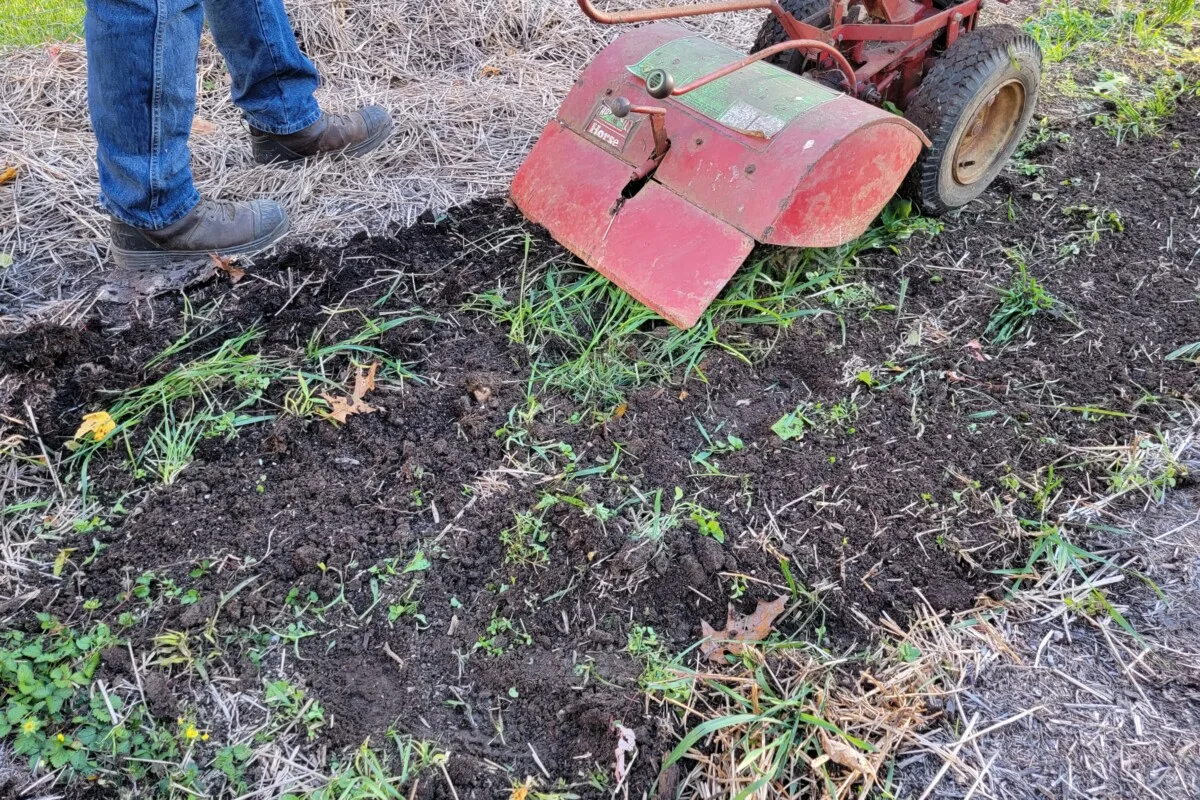
If there’s a gardener in your circle who has a rototiller, I’ll bet you anything they love getting the chance to use it and would happily come till your new garden for you.
Ask for help. You’ll get it.
Now, hit up your Facebook page or your Instagram with your list. Text friends and family with it as well. Send an email to your coworkers with your gardening wish list. You’ll probably be shocked at the amount of help people are willing to give.
And that neighbor down the road with the amazing garden that you’ve never spoken to despite living in the same spot for years? They’re an easy target. Stop by some Saturday and tell them you’re starting a garden and you’ve always admired theirs. Ask them when they usually start planting outdoors. What pests do they run into each year? At some point, mention that you’re starting from scratch and still gathering all of your supplies. I’d be shocked if you went home empty-handed or without the promise of help.
An Unpopular Opinion
I have long said that saving the planet is a rich man’s job. For the rest of us, it’s a guilt trip. Most of the solutions that are pressed on us require a lot of money.
Fast fashion? Hey, buy this organic cotton shirt made in a factory that supports workers living below the poverty level. It’s only $127. Oh, you mean you haven’t switched your entire kitchen over to glass storage containers, and you’re still using plastic? And why haven’t you ditched your fossil fuel-guzzling car and bought a Tesla yet? Don’t you care about the planet?
For the vast majority of us, these “solutions” are out of reach.
Yet they populate the gardening world as well. As someone who has had to choose between buying groceries or heating oil to keep the furnace running, I am here to tell you to ignore all of that green guilt. Do what you need to do to start your garden.
- If that means buying a growing mix with peat moss in it because it’s cheaper, do it.
- If that means buying seeds at the dollar store that aren’t organic and don’t have that BS non-GMO stamp on them, do it.
- If you need to grow your vegetables in a plastic milk jug, do it.
Do what you need to do to take care of yourself, and when you’re able, you can start looking at more sustainable solutions. In the meantime, skip the guilt and get gardening. Yes, you can start a garden for free, but it takes a lot of work. It’s okay; you’ve got this.
Promise Me You’ll Give Back When You Can
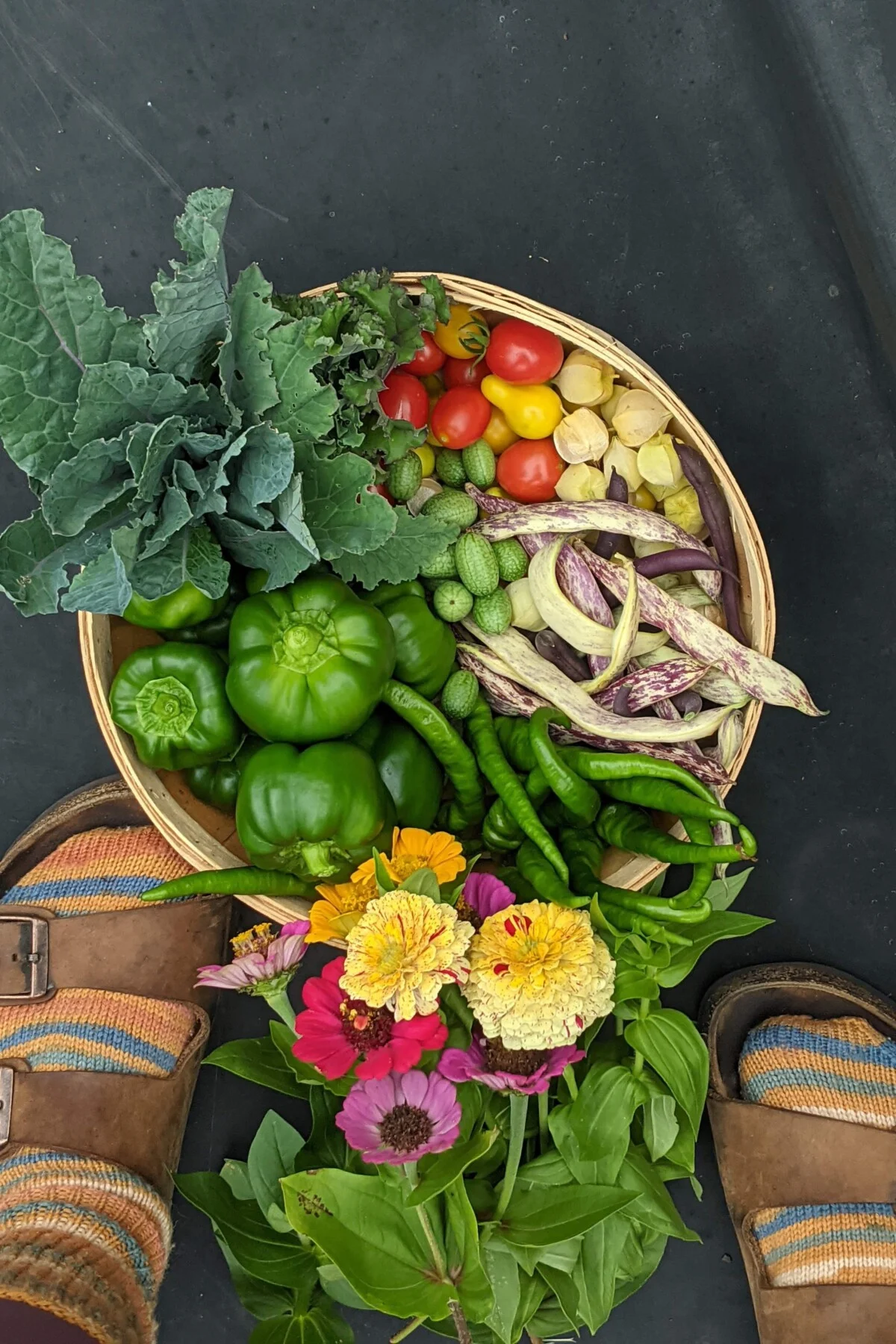
Later in the growing season, when you’re standing in your garden, yanking up weeds, and you’re pleased as punch with the basket full of produce at your feet, I want you to stop for a moment. Remember how hard you worked for this patch of dirt and these vegetables. Be proud of yourself because what you did is no small thing. You’re a gardener now, and that means you have the power to help someone else get started. It’s a life-changing gift you can share, and I hope you will because I really don’t want to eat my gardening gloves. They’re disgusting.

Get the famous Rural Sprout newsletter delivered to your inbox.
Including Sunday musings from our editor, Tracey, as well as “What’s Up Wednesday” our roundup of what’s in season and new article updates and alerts.

